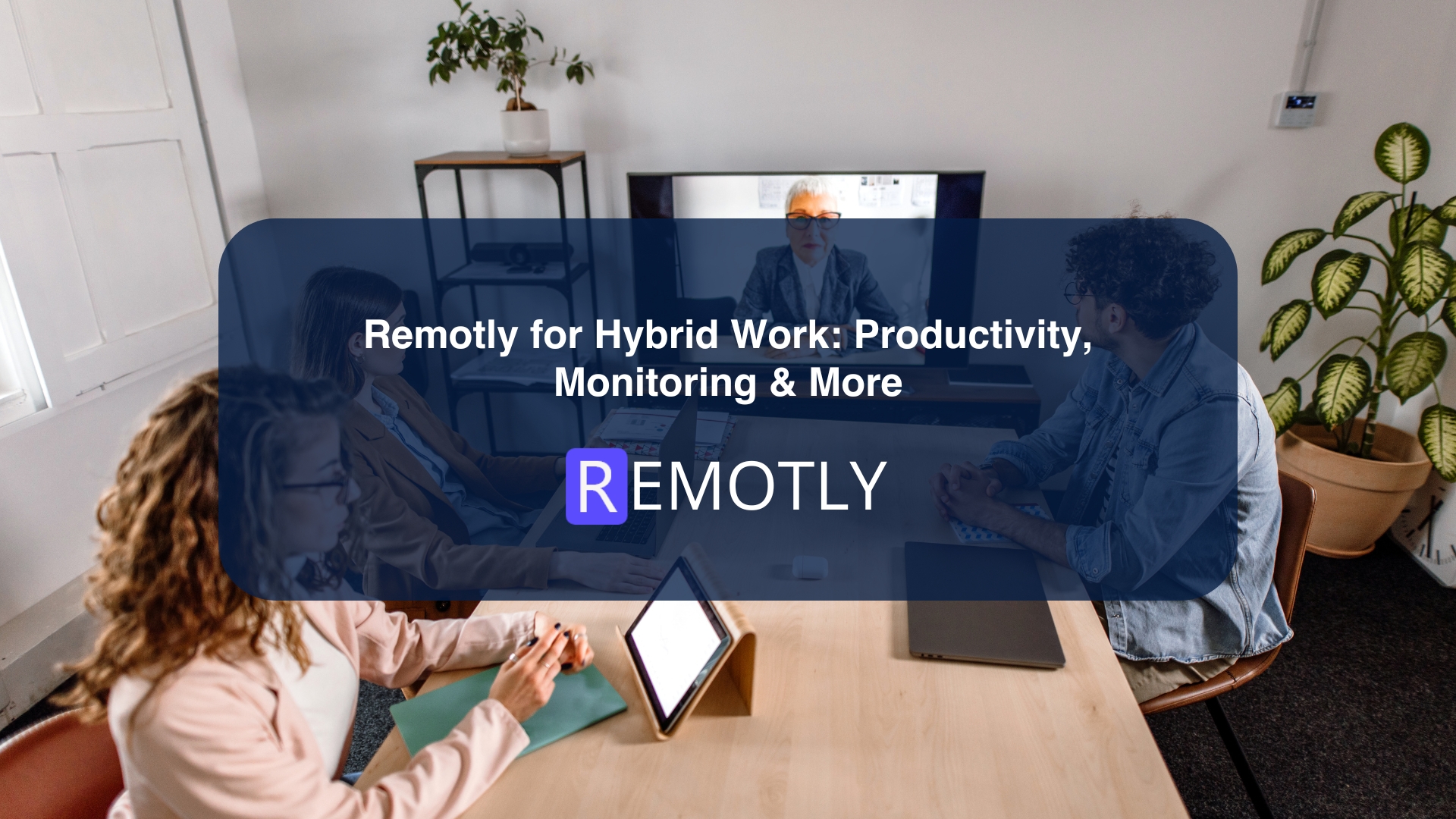Workplace insights help businesses improve employee engagement, remote work, and productivity by analyzing behavior and performance data. Implementing these insights boosts satisfaction, streamlines workflows, and enhances business results.
What Are Workplace Insights and Why Do They Matter
Workplace insights are data-driven observations about how employees behave, collaborate, and perform in their roles. These insights come from tools like:
- User activity tracking
- Employee surveys
- Performance dashboards
Businesses use this data to understand how work happens and where things can be improved. Done right, workplace insights lead to:
- Higher productivity
- Smarter processes
- Happier, more engaged teams
How Do Workplace Insights Improve Employee Engagement?
Engaged employees are more motivated, productive, and loyal. Insights help leaders spot what’s working—and what’s not. For example:
- Surveys can show if teams feel under-recognized
- Feedback tools may reveal a lack of growth opportunities
- Engagement trends can signal burnout before it spreads
With this data, you can take action fast—adjust management practices, offer professional development, or improve recognition systems.
How Can Insights Optimize Remote Work?
Remote and hybrid work make visibility harder. That’s where insights come in.
By tracking communication habits, task completion, and time use, businesses can:
- Identify collaboration breakdowns
- See which tools or meetings drain time
- Pinpoint overloaded or isolated team members
With this info, you can streamline virtual workflows and build better support for remote employees.
What Tools Support Workplace Insights?
Here are the top technologies to gather and act on insights:
- User Activity Monitoring
Tracks apps, websites, and time spent on tasks. - Employee Monitoring Software
Goes deeper—measuring task completion, communication frequency, and performance trends. - Pulse Surveys & Feedback Tools
Capture real-time sentiment and suggestions from employees themselves.
Used together, these tools offer a complete view of your team’s strengths and stress points.
How Do Insights Drive Process Efficiency?
Once you know what’s slowing people down, you can fix it. Workplace insights reveal:
- Redundant tasks (e.g., manual data entry)
- Workflow bottlenecks
- Training gaps
With this knowledge, you can automate, delegate, or redesign processes to help teams move faster and smarter.
What Are the Best Strategies to Apply These Insights?
To truly benefit from workplace insights, try these best practices:
- Promote Open Communication
Encourage employees to give honest feedback—then act on it. - Build a Culture of Continuous Improvement
Use insights to run experiments, track changes, and evolve your workplace. - Train Leaders and Teams to Use Tools Wisely
A dashboard is only useful if people understand what it means and how to apply it.
What Business Results Can You Expect?
When you align your workplace with data-backed decisions, you unlock powerful results:
- Higher Employee Satisfaction
Addressing frustrations increases morale and reduces turnover. - Better Productivity
People spend more time on what matters and less on what’s broken. - Faster Decision-Making
You’re not guessing—you’re acting on real-time evidence.
In today’s fast-paced business environment, understanding workplace dynamics is more critical than ever. Workplace insights can significantly impact how a business operates and its overall success. By leveraging these insights, companies can boost employee engagement, enhance remote work practices, and ultimately improve productivity and efficiency. In this article, we will explore how workplace insights can drive impactful business results and provide actionable strategies for implementation.
Workplace insights refer to the valuable information gleaned from observing and analyzing employee behavior and interactions within the workplace. These insights can come from various sources, such as user activity monitoring, employee feedback, and performance metrics. Understanding these insights is crucial for creating a work environment that fosters productivity and efficiency.
Enhancing Employee Engagement
Employee engagement is a key factor in determining the success of a business. Engaged employees are more productive, committed, and likely to stay with the company for a longer period. By analyzing workplace insights, businesses can identify areas where employee engagement is lacking and implement strategies to address these issues. For example, insights from employee surveys can reveal a need for more recognition and opportunities for professional growth.
Supporting Remote Work
The rise of remote work has transformed the way businesses operate. To ensure remote work is as productive as possible, companies must leverage workplace insights to understand how remote employees interact and what challenges they face. By analyzing user activity and communication patterns, businesses can identify potential bottlenecks and improve remote work practices.
Improving Workplace Productivity
Workplace productivity is crucial for a company’s success. By utilizing workplace insights, businesses can identify factors that influence productivity and implement changes to enhance efficiency.
Identifying Productivity Barriers
User activity monitoring and employee monitoring software can provide valuable insights into how employees spend their time during work hours. By analyzing this data, businesses can identify productivity barriers such as time-wasting activities or inefficient processes. Once these barriers are identified, companies can implement changes to streamline workflows and improve productivity.
Implementing Efficient Processes
With insights into how employees work, businesses can develop and implement more efficient processes. For instance, if data shows that employees spend excessive time on manual data entry, businesses can automate these tasks to free up time for more valuable activities. Additionally, insights can help companies identify training needs to ensure employees have the necessary skills to work efficiently.
Leveraging Technology for Workplace Insights
Technology plays a crucial role in gathering and analyzing workplace insights. Several tools and software solutions are available to help businesses monitor employee activity and gather valuable data.
User Activity Monitoring
User activity monitoring tools track how employees interact with their computers and applications during work hours. These tools provide insights into how time is spent, which applications are used, and which websites are visited. By analyzing this data, businesses can identify patterns and make informed decisions to improve productivity.
Employee Monitoring Software
Employee monitoring software goes beyond user activity monitoring by providing a comprehensive view of employee performance. This software can track key performance metrics, such as task completion rates and collaboration levels. With this information, businesses can identify high-performing employees and provide targeted support for those who need it.
Strategies for Implementing Workplace Insights
To effectively leverage workplace insights, businesses must implement strategies that promote a positive work environment and support employee productivity.
Encouraging Open Communication
Open communication is essential for gathering valuable workplace insights. Encourage employees to share their feedback and suggestions for improving the work environment. By creating a culture of open communication, businesses can gain insights into employee needs and make informed decisions to enhance the workplace.
Fostering a Culture of Continuous Improvement
A culture of continuous improvement encourages employees to seek ways to improve their work processes and productivity. By leveraging workplace insights, businesses can identify areas for improvement and implement changes to support this culture. Regularly reviewing and analyzing workplace data helps companies stay agile and responsive to changing needs.
The Impact of Workplace Insights on Business Results
Workplace insights have a significant impact on business results. By understanding employee behavior and interactions, businesses can create a more productive and efficient work environment, leading to improved performance and success.
Increased Employee Satisfaction
When businesses use workplace insights to address employee needs and concerns, employee satisfaction increases. Satisfied employees are more engaged, productive, and likely to remain with the company, reducing turnover and associated costs.
Enhanced Business Performance
By improving workplace productivity and efficiency, businesses can enhance overall performance. Workplace insights help companies identify areas for improvement, streamline processes, and support employee growth, leading to better business outcomes.
Conclusion
Workplace insights are a powerful tool for driving impactful business results. By understanding employee behavior and interactions, businesses can enhance employee engagement, improve remote work practices, and boost productivity. By leveraging technology and implementing strategies that promote a positive work environment, companies can harness the power of workplace insights to achieve success.
Incorporating workplace insights into your business strategy is essential for staying competitive in today’s dynamic business landscape. By doing so, you’ll be well-equipped to create a work environment that fosters productivity, efficiency, and growth.




